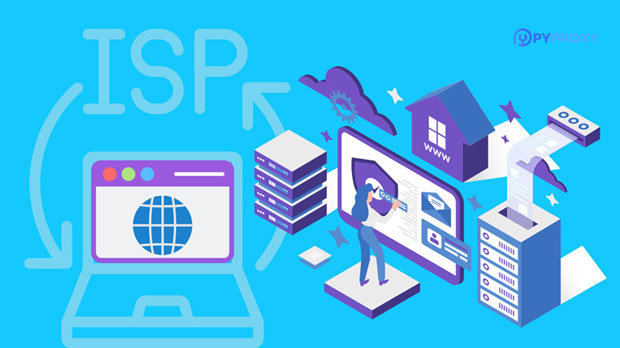The relationship between the global node latency of proxy web browser HTTP proxies and their price is an interesting aspect that impacts businesses, digital marketers, and users who require secure, efficient browsing. Proxy services are crucial tools for browsing the internet securely and anonymously, and understanding the pricing mechanism based on latency is essential. In this article, we will explore how proxy node latency affects price points, delve into the technical aspects, and analyze the real-world implications for users. Understanding Proxy Web Browser HTTP ProxiesProxy servers act as intermediaries between a user’s device and the internet, helping to route traffic through a different network. This provides users with anonymity and enhanced security. A proxy web browser HTTP proxy specifically focuses on web browsing traffic. HTTP proxies handle web-based communication, allowing the user to send and receive HTTP requests through the proxy server, masking their actual IP address and geographical location.There are different types of proxies available globally, each offering various advantages and disadvantages in terms of speed, anonymity, and reliability. HTTP proxies are among the most common, providing users with basic functionalities for web browsing. The global node latency of a proxy, however, is crucial in determining the efficiency of this process.What is Global Node Latency?Latency in the context of proxies refers to the delay experienced when data travels from the user's device to the proxy server and vice versa. Global node latency specifically refers to the time taken for data to travel to and from servers located in various geographic locations worldwide.Low latency is vital for smooth browsing experiences, especially for businesses or users who require real-time data access, such as e-commerce platforms or media streaming services. High latency, on the other hand, can result in slow page loads, delayed requests, and poor user experience.The Relationship Between Latency and PriceOne of the most significant factors influencing the price of proxy services is the geographic location of the proxy server. Proxies located in regions with higher internet speeds and advanced infrastructures often exhibit lower latency compared to servers in remote or less-developed areas. As such, proxies with low latency are generally priced higher due to the added value they provide in terms of speed and reliability.Additionally, the number of hops a data request must make between various proxy nodes and the destination server also affects latency. The more hops, the higher the latency, and, in turn, the price can reflect this because fewer hops often result in faster service, which is more desirable.Why Do Some Proxies Have Lower Latency Than Others?There are several reasons why some proxy servers have lower latency than others. The most common factors include:1. Server Location: Proxies located closer to major data hubs or in areas with better infrastructure generally experience lower latency. For example, proxies in major cities or tech hubs often have lower latency compared to proxies in remote locations. 2. Quality of the Network Infrastructure: The underlying network infrastructure also plays a key role in determining latency. Proxies built on high-speed fiber-optic connections will have lower latency than those relying on less advanced technologies.3. Traffic Load: Proxy servers with high traffic loads can experience congestion, which increases latency. Proxies with fewer users or more dedicated resources can deliver lower latency and, hence, higher prices due to better performance.4. Bandwidth Allocation: Proxies with higher bandwidth allocations are able to transfer data more quickly, which results in lower latency. Services offering dedicated bandwidth often provide faster connections at a premium price.The Impact of Latency on Different UsersFor businesses, especially those in sectors that require real-time communication or transactions, such as e-commerce, digital marketing, and content streaming, the impact of latency is significant. Higher latency can slow down website load times, disrupt streaming services, or even affect search engine optimization (SEO) efforts, which depend on fast page loading times.For individuals, latency may impact activities like browsing, gaming, or media streaming. Higher latency can cause delays in loading websites, videos, and online games, detracting from the overall user experience.Moreover, users who rely on proxies for anonymity and security will also need to consider how latency affects their browsing experience. High latency may not only affect the speed of browsing but could also reveal patterns of behavior that can be traced back to the user more easily.Does Lower Latency Always Mean Higher Price?While there is a clear correlation between low latency and higher pricing, it is not always a straightforward relationship. There are cases where proxies with low latency are priced competitively, particularly in markets with high competition or where providers want to attract specific types of users, such as those in the gaming or content delivery industries.Moreover, some proxy providers may offer lower-cost options with moderate latency to cater to users who do not require the highest performance. These proxies may still offer sufficient performance for casual browsing, but they may not meet the demands of professional users or businesses that need real-time processing.Conclusion: How to Choose the Right Proxy Based on Latency and PriceWhen selecting a proxy service, it is essential to balance latency and price based on your specific needs. For users and businesses that require fast and reliable proxies, such as those involved in e-commerce or media streaming, it is worth investing in premium services that provide low latency. These proxies, while more expensive, will enhance user experience and performance.On the other hand, casual users who do not require high-speed proxies may be able to find more affordable options that provide adequate performance for regular browsing activities. It is important to assess the trade-offs between speed, reliability, and cost before making a decision.Ultimately, understanding the connection between proxy node latency and pricing is crucial for anyone looking to optimize their browsing experience. Whether for business or personal use, the right balance can provide significant benefits in terms of speed, security, and cost-efficiency.
Jul 22, 2025


































































